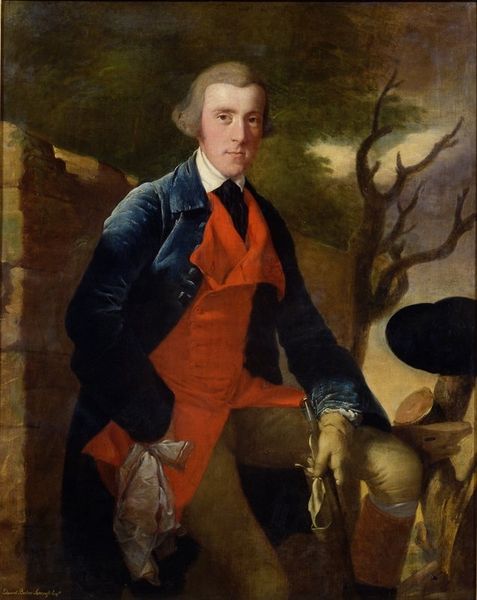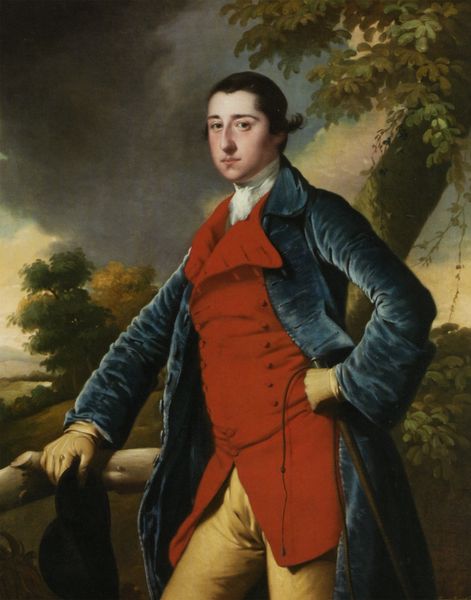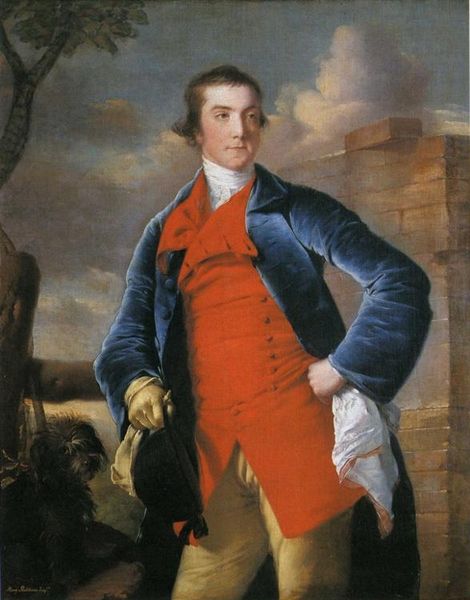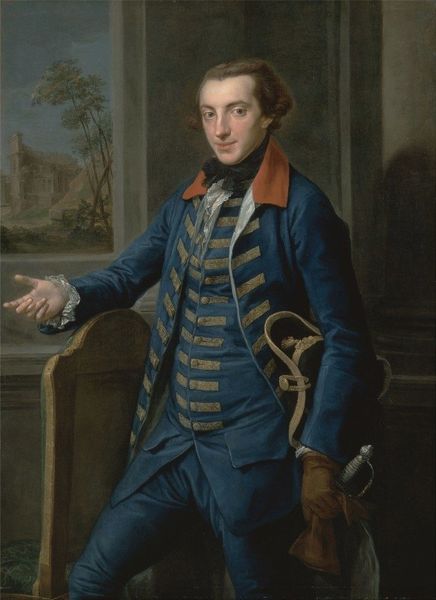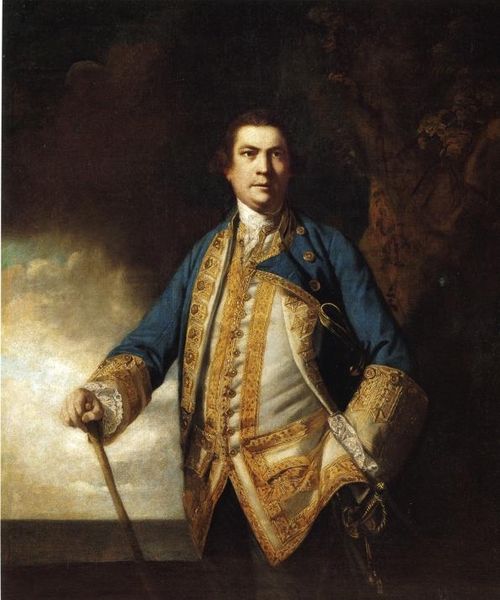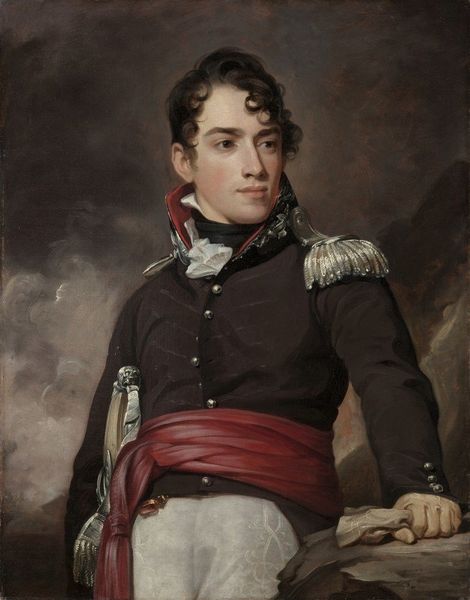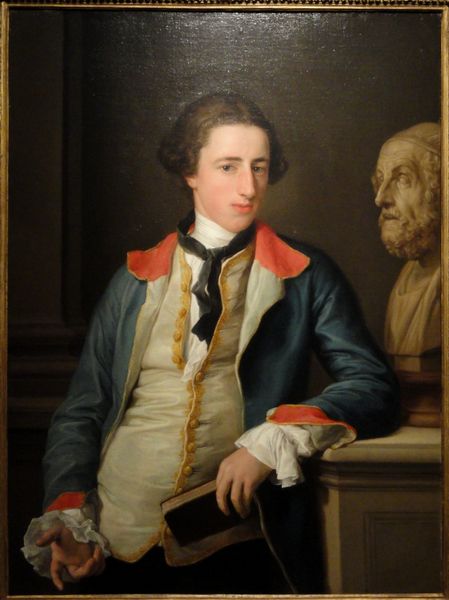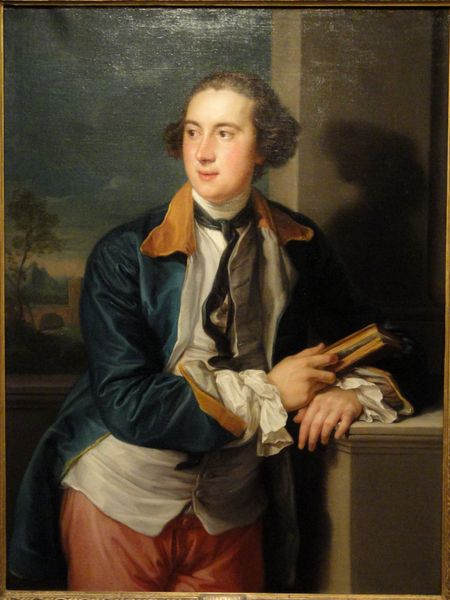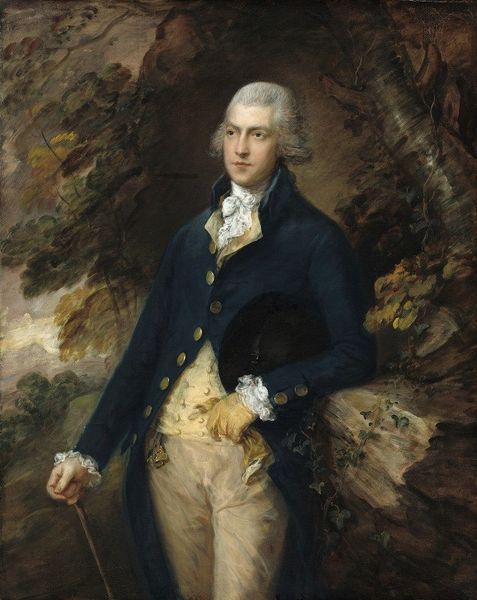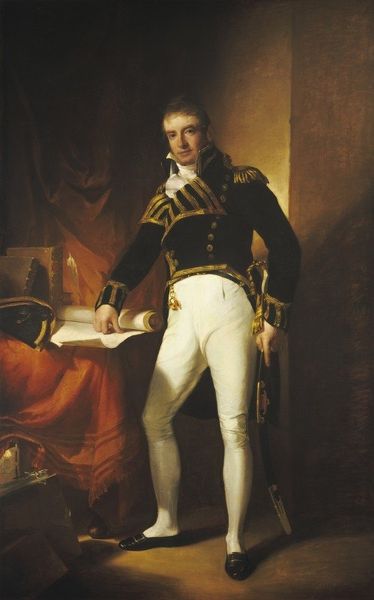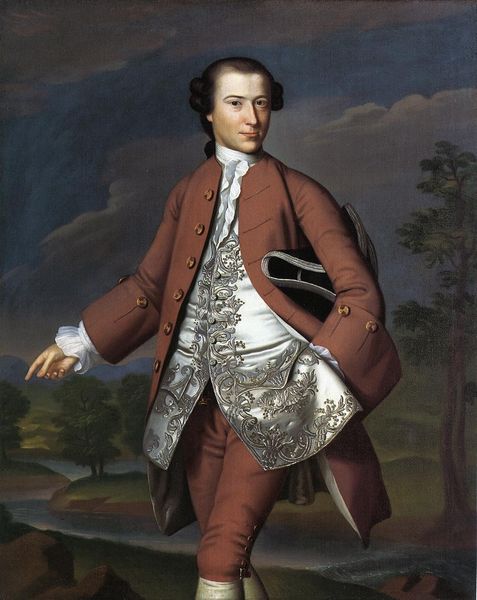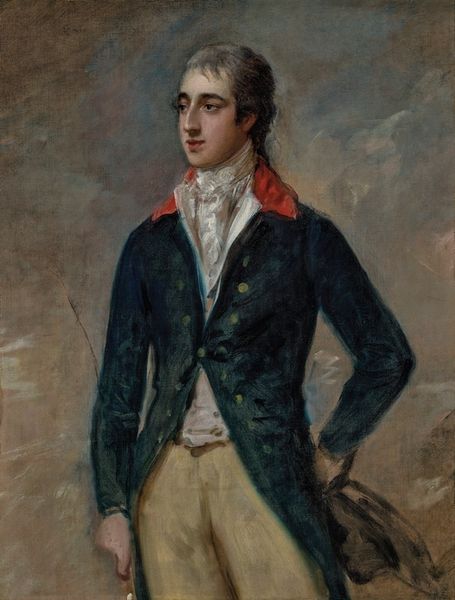
Dimensions: 127 x 101.6 cm
Copyright: Public domain
Editor: This is Joseph Wright of Derby's 1763 portrait of Francis Noel Clarke Mundy, painted in oils. The subject, strikingly dressed, is posed in a wild landscape. I find the combination of refined portraiture and untamed nature really intriguing. How do you interpret this work? Curator: It's fascinating how Wright situates Mundy within the picturesque landscape. It's not just a backdrop; it's integral to understanding Mundy's identity as a landowner and member of the gentry. We see here a shift in the public perception of art - portraits are moving outdoors, becoming entwined with ideas of nature and ownership. Does this portrayal speak to any particular societal values of the time? Editor: I suppose it emphasizes the landed gentry's connection to the land and their privileged lifestyle, contrasting the formal portrait style with a rugged landscape. Does the setting affect how the figure wants to be seen, what values the figure represents? Curator: Precisely. The setting deliberately conveys status and reinforces the idea of a harmonious relationship between man and nature, carefully crafted for public consumption. It reflects the elite's self-image, promoted through art institutions, which played a role in shaping public perceptions of class and power. Editor: So, it’s less about capturing reality and more about constructing an ideal. I never thought about landscapes being so explicitly political. Curator: Indeed. This "genre-painting" presents nature as both beautiful and symbolic, intertwined with the narratives of those who controlled it, perpetuating particular views that shape society at the time and are expressed in museums today. Editor: Thanks, I will remember to consider the relationship between people and art more closely in my approach, to get a more in-depth perspective. Curator: My pleasure; remember that context always transforms observation and perception.
Comments
No comments
Be the first to comment and join the conversation on the ultimate creative platform.
